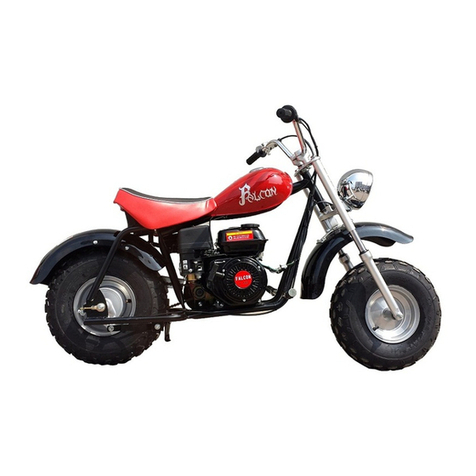TABLE OF CONTENTS
Notice to user’s....................................................................................................2
Safe operation .....................................................................................................3
Pre-ride checklist.................................................................................................4
Safety gear............................................................................................................5
Location of WARNING labels............................................................................. 6
Main data .............................................................................................................7
Parts & subassemblies........................................................................................8
Operation............................................................................................................10
Fuel Valve ...........................................................................................................10
Engine starting ..................................................................................................11
Breaking in the engine......................................................................................12
Switches on the right handlebar.......................................................................13
Gear shifting.......................................................................................................14
Check-ups, adjustment and maintenance.......................................................15
CHECKING THE OIL..........................................................................................16
Changing the oil, cleaning oil filter screen.....................................................17
Check-up of spar k plug....................................................................................17
VALVE INSPECTION........................................................................................18
Checking & cleaning the air filter ...................................................................19
Adjusting the throttle cable.............................................................................20
Adjusting the carburetor .................................................................................20
Inspection of front Hydraulic brake...............................................................21
Clutch adjustment............................................................................................22
Adjustment of chain.........................................................................................23
Greasing procedures to the driving chain.....................................................23
Trouble Shooting.............................................................................................24
Vehicle washing ..............................................................................................26
Instructions for storage .................................................................................27
Resumption of service after storage .............................................................28
Table OF torque of fasteners .........................................................................28
Resumption of service ...................................................................................29
Inspection and Maintenance..........................................................................30
Serial number location ...................................................................................31
Electrical diagram............................................................................................32
Emission control system warranty ...............................................................33




























